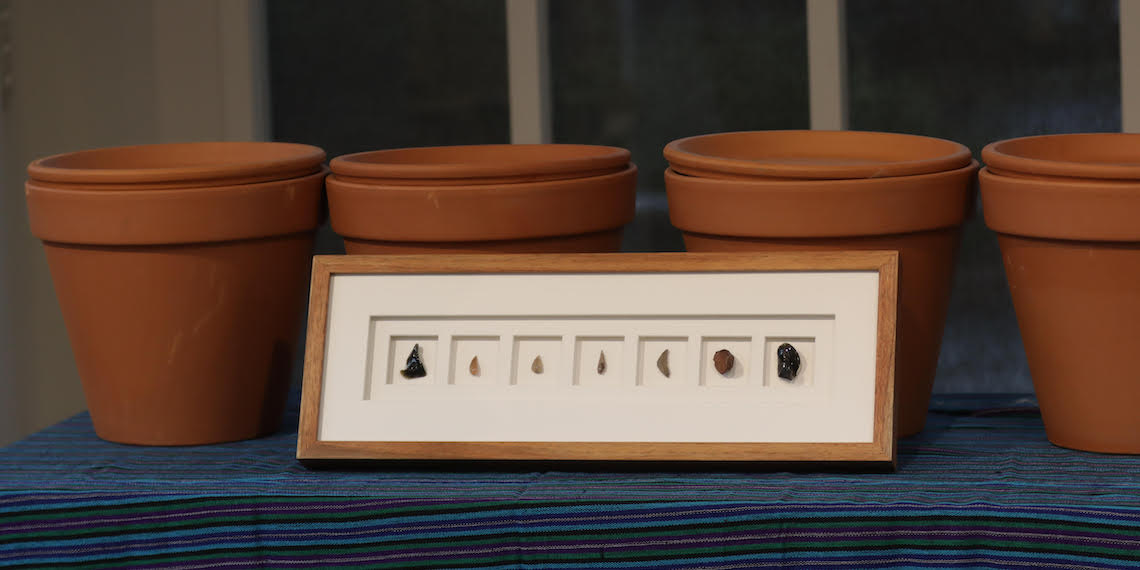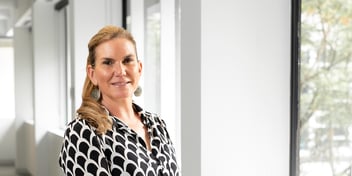Here’s what happened after a utility unearthed 2700 ancient artefacts during water works

Yarra Valley Water (YVW) was doing routine excavation works in Melbourne’s east in 2020 when they found something.
That something turned out to be 2700 ancient artefacts, including stone flakes and tools used by the Wurundjeri Woiwurrung for everyday tasks, believed to be around 5000 years old.
The unusual discovery during the YVW Community Sewerage Program works in Donvale has become an opportunity to deepen relationships with the Traditional Owners, the Wurundjeri Woiwurrung Cultural Heritage Aboriginal Corporation, and create lasting benefits for the community.
To mark the significance of the finds, Wurundjeri Woiwurrung Elders officiated in a ceremony to rebury some of the artefacts under manna gums lining the creek, an area of high cultural significance.
Elders also joined members of YVW’s Community Sewerage Program team to visit the nearby Whitefriars College to showcase the history of the area, and suggested that some of the artefacts be displayed at the school.
Wurundjeri Woiwurrung Elder Allan Wandin said the outcomes of the partnership established good standards for future projects with the utility, and set a benchmark for other organisations seeking to work respectfully with Wurundjeri Woiwurrung people.
The new display at Whitefriars College is an opportunity to educate students about the local Aboriginal cultural heritage and history, Wandin said, and is an important way to recognise past ownership of the area.
YVW Managing Director Pat McCafferty said the discovery of the artefacts was one of the organisation’s most significant historical finds and presented an opportunity to work with the Wurundjeri Woiwurrung to ensure culture is carried forward respectfully.
“We know that our work to deliver essential water and sewerage services can disturb sites of cultural significance and we’re committed to working with Traditional Owners to ensure we do all we can to help protect them,” he said.
Achieving more than compliance
While the process of managing cultural heritage is legislated, YVW Aboriginal Partnerships Manager Nina Braid said the utility wanted to move beyond compliance and take the opportunity to learn as much as possible from the discovery.
“Working with the Wurundjeri Woiwurrung Elders and staff to manage this discovery presented a hands-on way to learn about the history of the area we operate within. It is also about learning the truth of the area so we can all walk forward together in a respectful way,” she said.
“When the legislation was formed, Wurundjeri Woiwurrung people were not consulted. But people are still discovering their own histories through this cultural heritage protection process, and we are committed to following the lead of Wurundjeri Woiwurrung so that they can track their history of the place, as well.
“Looking beyond compliance, the process has been about taking the opportunity to respect the Wurundjeri Woiwurrung peoples' wish to engage in the cultural heritage process.”
Braid said managing cultural heritage alongside First Nations peoples is crucial to ensuring the utility meets its commitment to delivering more for the communities it serves.
“If we don't protect the cultural heritage, it's gone and it's gone forever. We want to find ways we can work on this together so we can all learn and grow, and so that we can work towards reconciliation through an understanding of the history of the place before colonisation,” she said.
“It's really all about taking the time to talk with Traditional Owners and asking them how they want their culture to be managed, because we want to do things better.
“We don't want to deliver a bottom-line service. We want to create better value for the community and for Traditional Owners in the work that we do.”
Tools for change
Braid said the first cultural heritage management plan inception meeting was conducted with Wurundjeri Woiwurrung Elders, YVW project managers and representatives from Jacobs, who partner with the utility onsite during artefact sieving operations.
“That first inception meeting is all about asking the Wurundjeri Woiwurrung about how they want us to manage the process. We respect that we are living on stolen land and that sovereignty was never ceded. And so we take our direction from Wurundjeri Woiwurrung,” she said.
“We also recognise that we build assets next to waterways and waterways are culturally sensitive. We begin our work knowing this and make sure we allow enough time for proper consultation.
“There's a whole story there that they'd like to tell, as well, and it's really important that we are respectful of their knowledge, too.”
Braid said that once the artefacts had been catalogued and registered, plans were then made to return the artefacts back to the ground, but, in this instance, Wurundjeri Woiwurrung Elders decided they’d like to use some of the artefacts as an educational tool for the community.
“We manage all reburials in consultation with the Traditional Owners, including where they want them to be buried. And that’s quite a big process. But we met with Uncle Ron and Uncle Allen and they decided some of the artefacts would be better utilised if we put them on display at the local school,” she said.
“Whitefriars College loved the idea, which is where the artefacts are now displayed. Now the students of the school are the caretakers of those artefacts into the future.
“It’s wonderful to see the amount of respect that the school has for the whole process. They have taken the responsibility very seriously.”
There are now a range of artefacts on display in the school foyer, with plaques explaining the significance of the items and the importance of the location they were found to the Wurundjeri Woiwurrung peoples.
Signs will soon be installed along the popular Mullum Mullum trail highlighting the significance of the area and the finds, and YVW will also work with Manningham Council to install a drinking fountain in the nearby Manna Gum playground.
“When we made the discovery, we knew we wanted to learn as much from this process as possible,” Braid said.
“And the Wurundjeri Woiwurrung Elders told us they wanted us to learn as much as we could about their people and their history, too. It’s been an incredible project to be a part of.”


